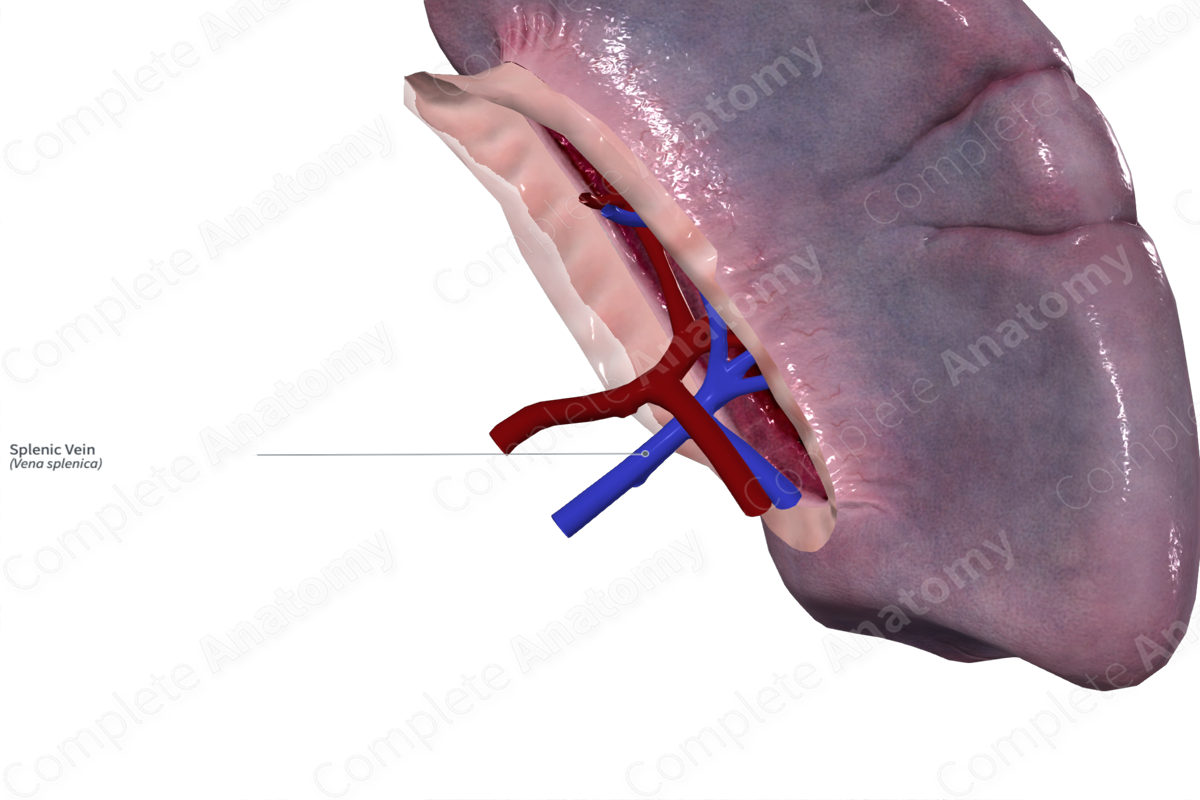
Quick Facts
Origin: Union of several splenic branches at the hilum of the spleen.
Course: Horizontal course, posterior to the body of the pancreas. Unites with superior mesenteric vein to form the hepatic portal vein.
Tributaries: Several segmental branches of the splenic vein, short gastric, left gastroomental, posterior gastric, and pancreatic veins.
Drainage: Spleen, pancreas, and stomach.
Origin
The splenic vein is formed at the hilum of the spleen by the union of several segmental branches, within the lienorenal ligament.
Course
The splenic vein travels retroperitoneally and parallel to the body and tail of the pancreas. Posterior to the neck of the pancreas, the splenic vein unites with the superior mesenteric vein to form the portal vein.
Tributaries
Multiple segmental branches of the splenic vein unite to form the splenic vein.
Short gastric, the left gastroomental, and pancreatic veins drain into the splenic vein directly or into the segmental branches. Along its course, the splenic vein also receives the posterior gastric vein.
Supplied Structures
Several splenic tributaries unite to form the splenic vein at the hilum of the spleen. The left gastroepiploic vein empties into the splenic vein within the gastrosplenic ligament. Three to five short gastric veins drain the fundus and the upper part of the greater curvature of the stomach. In approximately one third of individuals, the left gastric vein terminates at the splenic vein (Ohkubo, 2000).
List of Clinical Correlates
-Opitz (thrombophlebitic splenomegaly)
- Portal hypertension
References
Ohkubo, M. (2000) 'Aberrant left gastric vein directly draining into the liver', Clin Anat, 13(2), pp. 134-7.
Learn more about this topic from other Elsevier products





